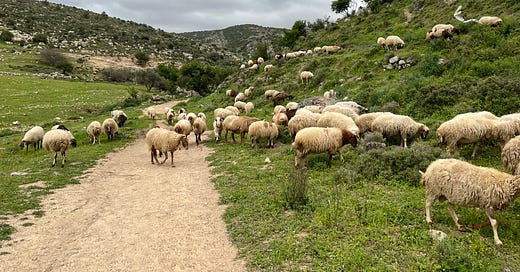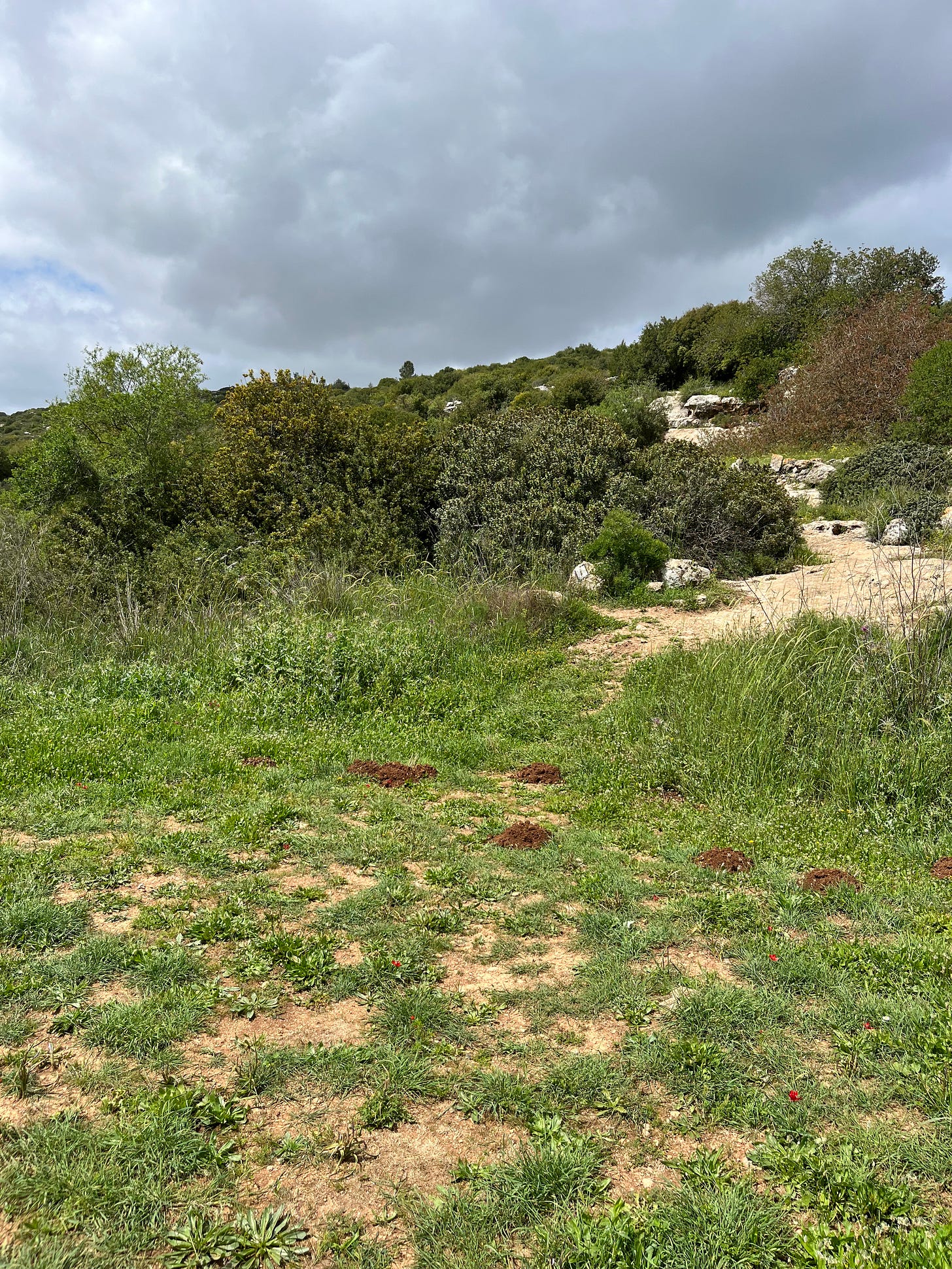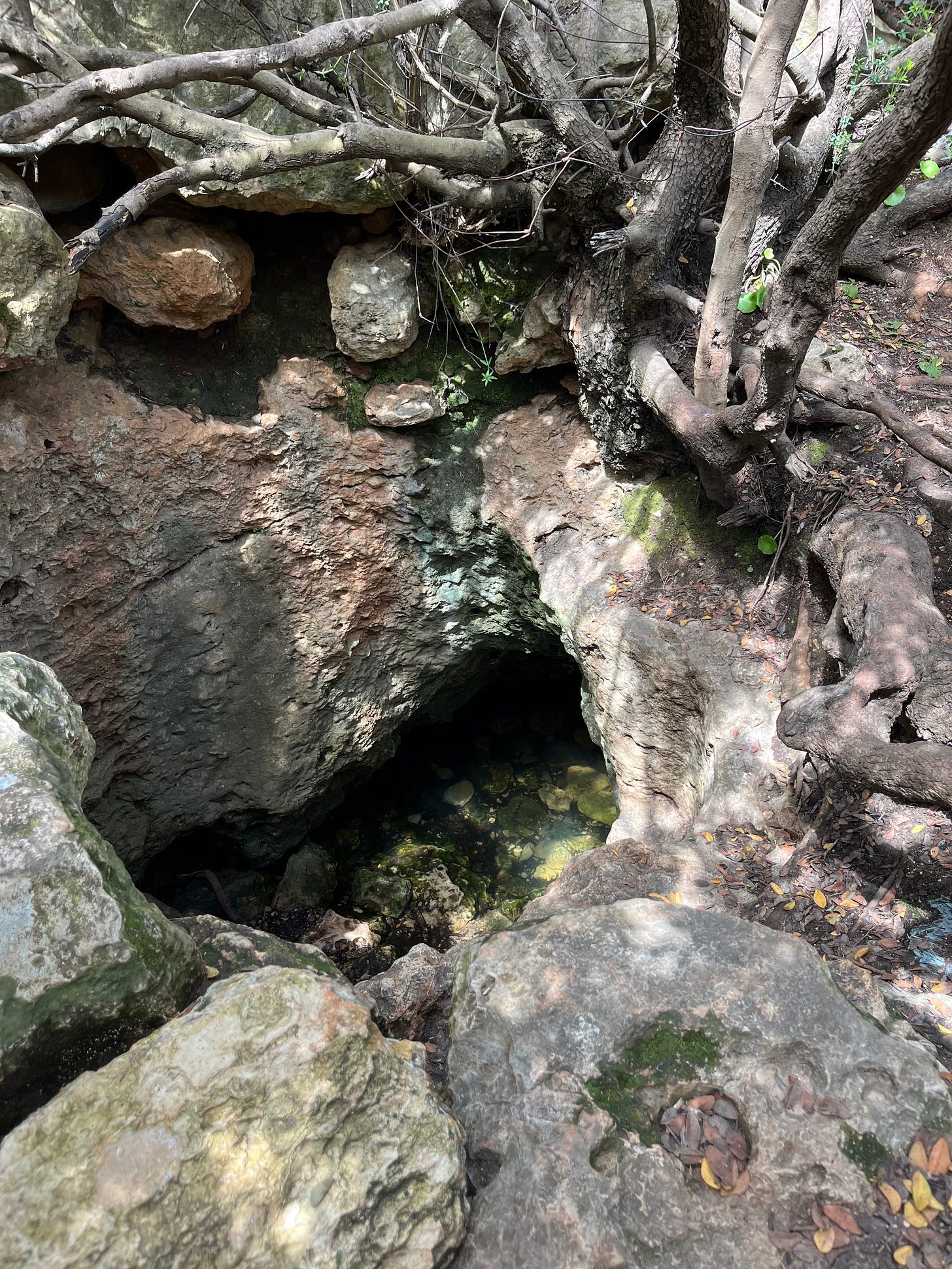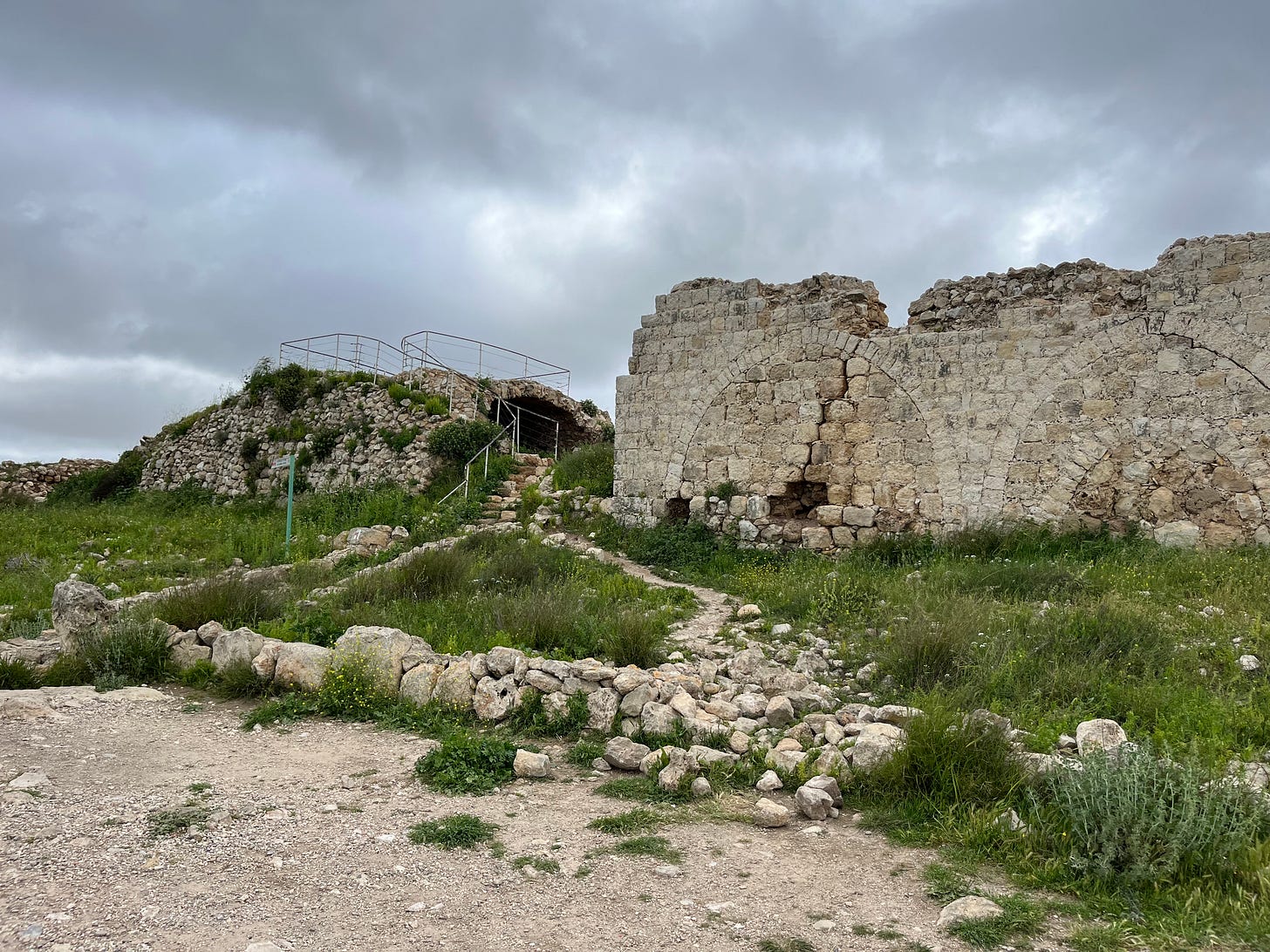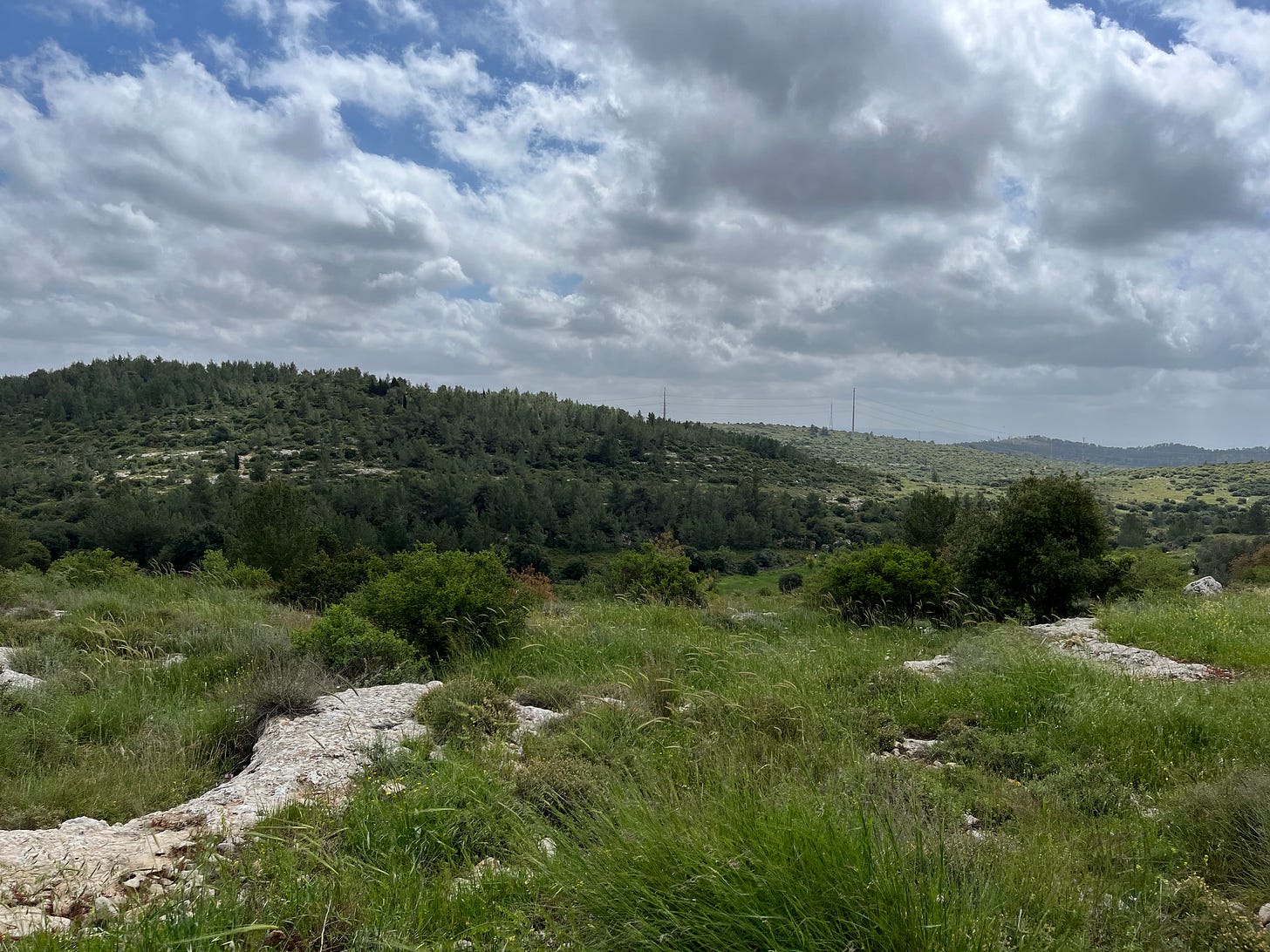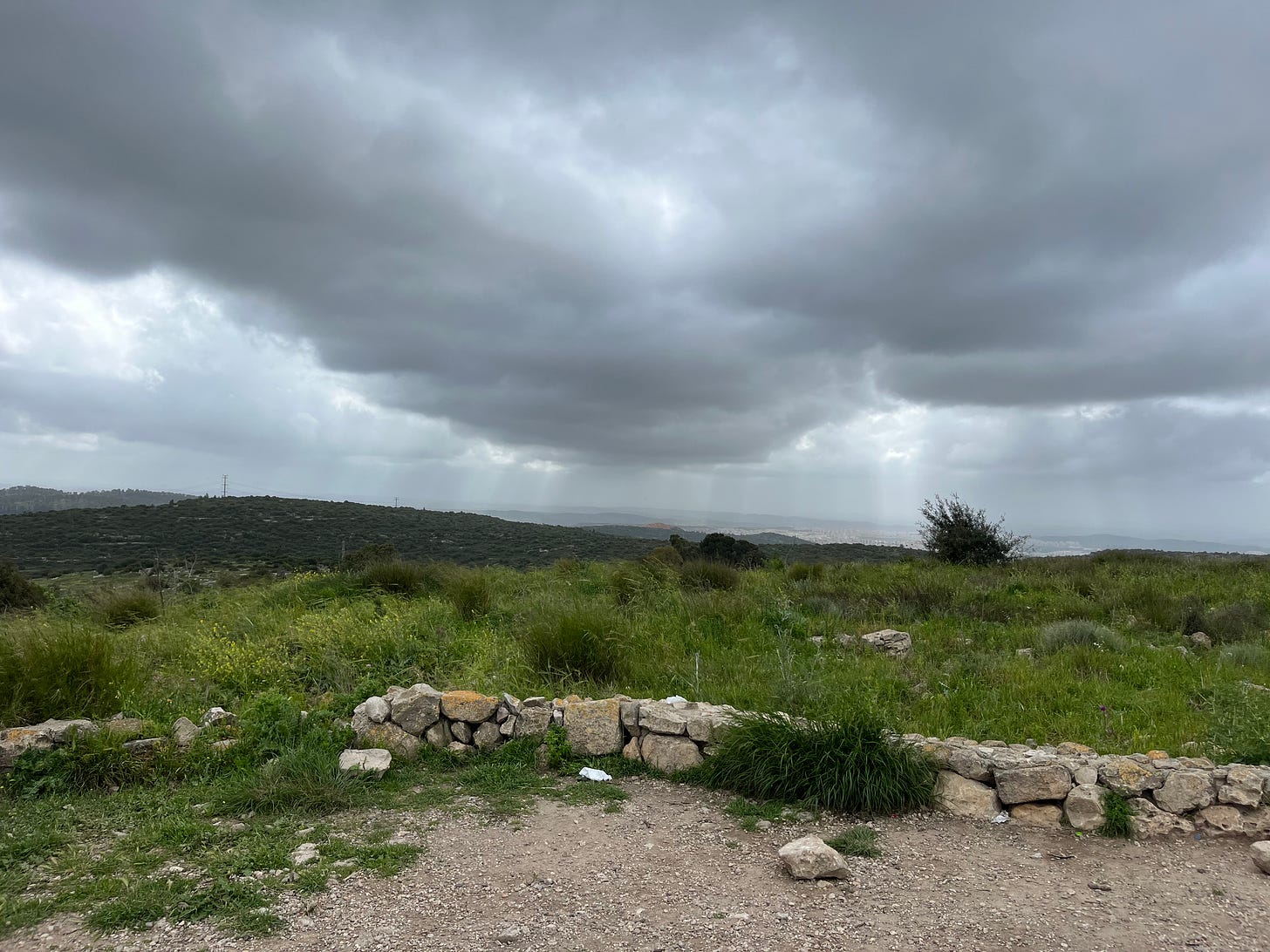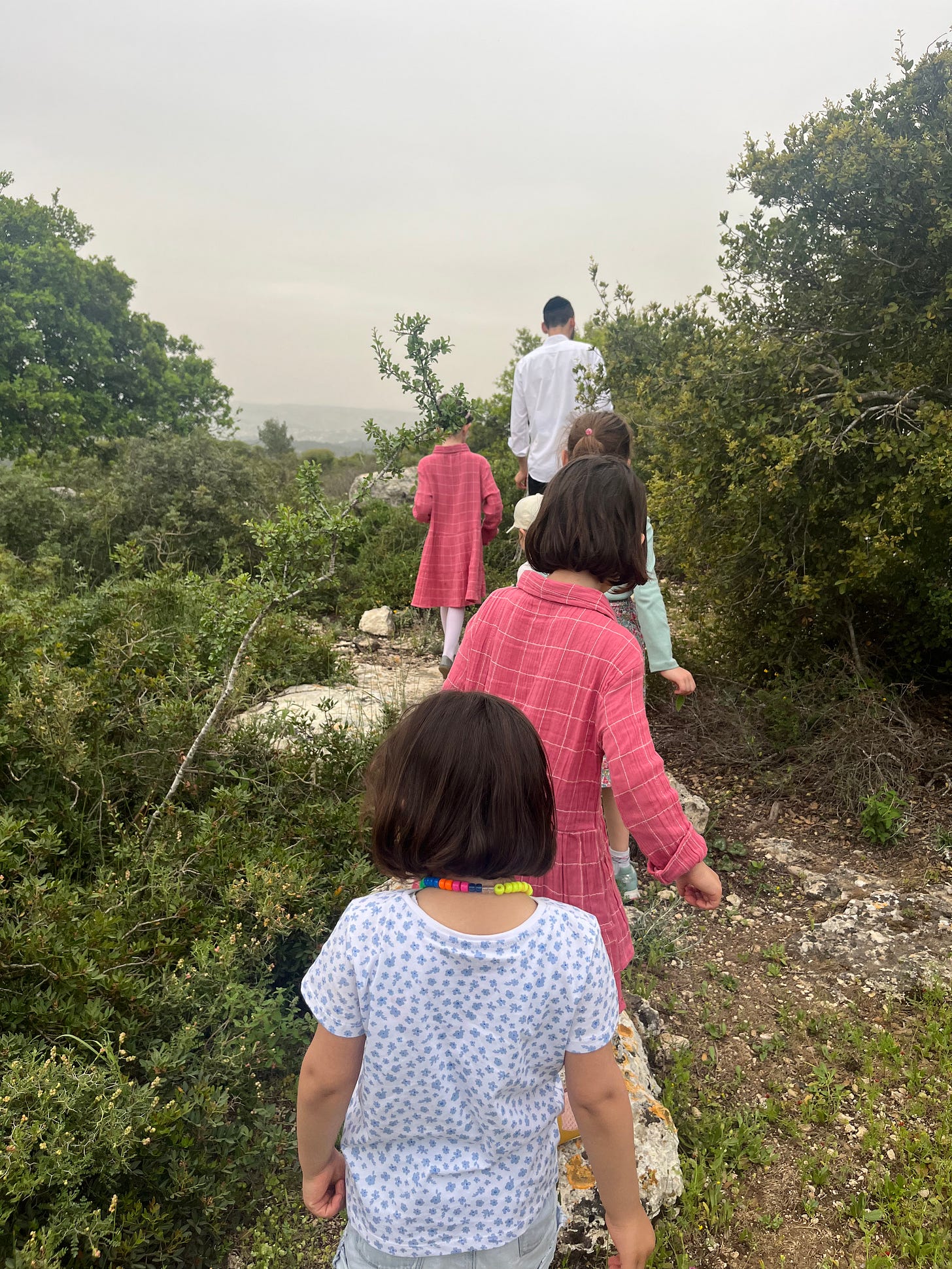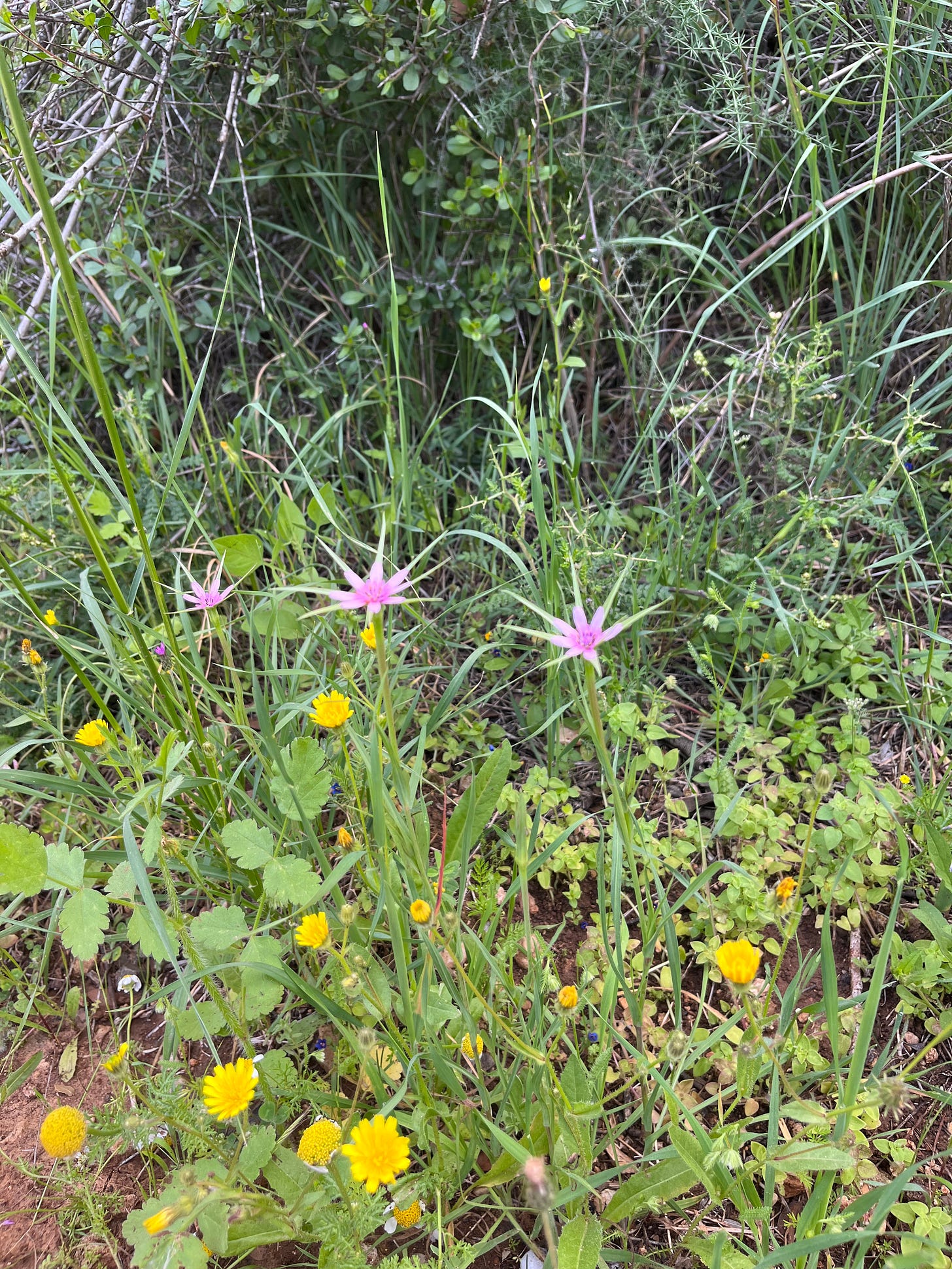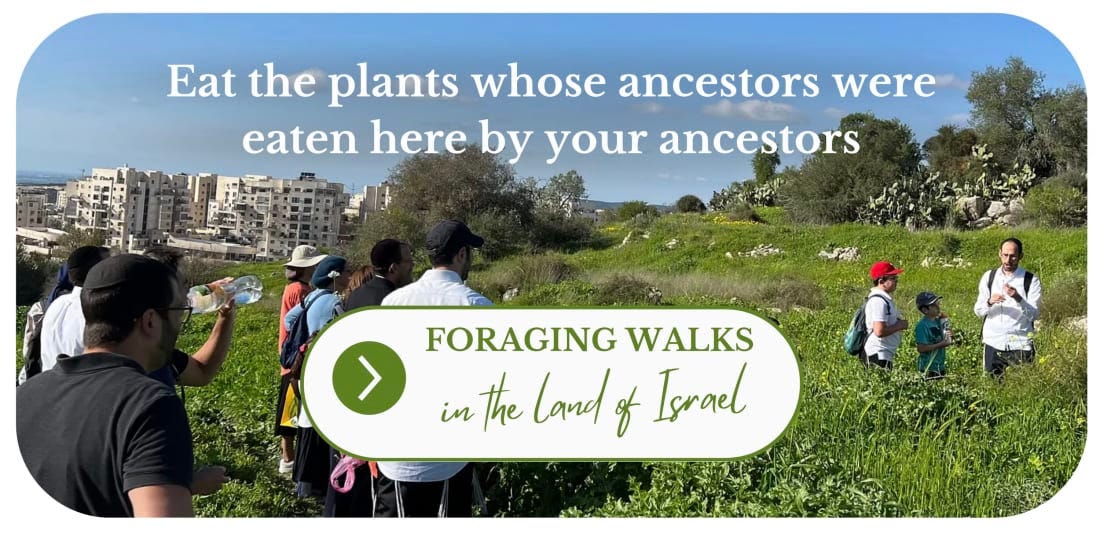Secret Springs, Crusader Forts, Bedouin Shepherds, Wild Garlic, and more.
A picture and video essay from the Jerusalem hills.
Happy Passover, Healthy Jews!
The week before last, as Passover preparations were revving up, and I was knee-deep investigating and pursuing a dozen new directions for this little Healthy Jew enterprise (more on that hopefully next week), I dropped it all and went on a day hike in the Jerusalem hills, right to the east of Bet Shemesh. No better way to meet stress than to invest an entire day in just walking.
Hey, let’s say an emergency comes up that burns a full day. Passover, or whatever it is that I’m involved in doing, would arrive just the same. Even better, imagine if - whoops! - the holiday ends up being a day earlier than I thought it was. Everything would still somehow work out. So why shouldn’t taking care of myself also warrant a break, even - or especially - right in the middle of all the action?
Here’s some pics and clips I took that I thought y’all might appreciate.
Uzan Spring
Let’s begin with something really cool. Here is a classic landscape in a valley in the middle of the hills to the west of Jerusalem. See that short tree right in the middle of the picture, to the left of the trail? Looks pretty regular. But then notice how the trail veers off into the tree.
What’s there? Take a look:
The Uzan spring:
Bet Itab and Back
Heading eastward and upward, I come to the ruins of Bet Itab, a crusader fortress with an underground escape tunnel system. There’s all sorts of legends about the place; one even has Samson hiding here from the Philistines. What’s certain is that it’s a great place to imagine Saladin swooping down from the hills with hordes of horsemen, chasing the Christian infidels out from the Holy Land.
Here’s a clip and some pictures of the surrounding countryside.
Circling back toward Bet Shemesh, I took a lovely trail that weaves in and out of the trees:
Bedouin Shepherds
In the last valley before the city there is a small Bedouin camp. Scores of Bedouin shepherds bring their herds of sheep and goats to the area in the spring to pasture. (The Israeli government encourages the migration because the free grass mowing helps prevent wildfires.)
Many of the shepherds are quite sociable. I’ve gotten to know a few. One fellow, Musa, is a good friend of mine. (More on him another day.) I met another guy recently, Talib, who told me that he’s been grazing his herds to the south of Bet Shemesh for thirty years, and his ninety-year-old father was there before him. He used to graze his flock in the neighborhood that I live. Perhaps I’m sitting right now where one of his goat’s grandmothers munched on the same nettles and milk thistles that still thrive right across the hill.
Garlic and Hawthorn
Lots of plants and flowers are growing and blooming around the Festival of Spring (as Passover is called in the Torah). Here’s two short clips about two edible and medicinal plants.
1. Wild garlic is less sharp than regular garlic, and the main part to eat is the flowers. Garlic is used traditionally for all sorts of infections, and has been extensively researched for medicinal properties.
2. Hawthorn, a small tree, has edible flowers and fruits that are also traditional remedies for cardiovascular conditions and anxiety. (I’ve actually seen this work with a client who had high blood pressure!) This tree has been growing in the area for thousands of years; it’s even mentioned in the Mishnah. (It’s called there uzradin).
Just yesterday, on a holiday outing, I taught a group of kids how to identify these plants and more. Here we’re learning about the hawthorn.
It was quite an experience, the whole crew marching down the trail chomping on freshly foraged garlic flowers.
Flowers
Finally, the “regular” flowers. The first, one of my favorites, is the stunning, velvety luf (That’s the Hebrew name. I don’t know what it’s called in English.) The second, with sincere apologies, I know nothing about.
My friends, may we all have a happy, peaceful, and healthy remainder of Passover.
Be well.
Thank you for reading Healthy Jew.
Here are 2 great paths to continue the journey:
Also check out this intro and index to explore hundreds of posts about our 3 Healthy Jew topics: Wellness with Wisdom, Land of Life (Israel), and Sensible Spirituality.
Finally, always feel free to reach out here with any comments, questions, or complaints:
I look forward to hearing from you!
Be well,
Rabbi Shmuel Chaim Naiman
Please note: All content published on Healthy Jew is for informational and educational purposes only. Talk to a qualified professional before taking any action or substance that you read about here.

